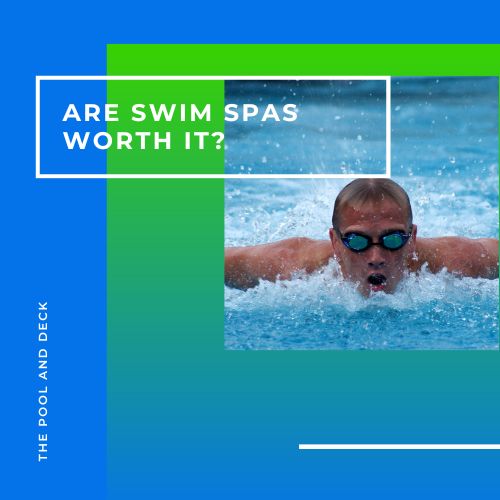Can I Put an Above Ground Pool on Pavers? (Really Helpful Advice!)
As an Amazon Associate, I earn from qualifying purchases.
Table of Contents
Can I Put an Above Ground Pool on Pavers?
The decision to buy and install an above ground pool in your backyard is very exciting. But then you need to figure out where exactly the pool will be located and the amount of ground preparation required. You may well ask, “Can I put an above ground pool on pavers”?
An above ground pool can be put on pavers, provided the paver surface is perfectly level and the base is structurally sound. You will still need to add a cushion between the pavers and the pool liner.
Installing an above ground pool on existing pavers is not a good idea. Existing patio pavers are unlikely to be perfectly level and even. The base on which the pavers were initially installed would most likely have moved due to soil erosion and ground movement.

Generally patios are designed for light foot traffic and may not be able to take the weight of a full above ground pool with swimmers.
Before you take the final decision on whether you can put an above ground pool on pavers or not, kindly read this post to get the pros and cons. The post also tells you the important Do’s & Don’ts, should you decide to install your above ground pool on pavers, anyway.
Can I Put an Above Ground Pool on My Patio?
You can put an above ground pool on an existing patio. But before you do that you must consider the following:
Patio Base Condition
The stability of the base on which the patio pavers are resting is extremely important. The patio must be able to support the weight of a full above ground pool. The weight of a family sized, completely full, above ground pool can be substantial.
A 54” deep, 24’ round above ground pool holds over 15,000 gallons of water. The weight of the water alone is over 125,000 pounds. (That’s the weight of 25 SUVs). All this weight is going to be on the pavers, and ultimately on the patio base.
More importantly, if your above ground pool is not perfectly level, then the weight of the water will not be distributed uniformly. This can result in some of the pavers sinking further into the base.
It is possible that your above ground pool may tilt and even collapse because of this instability.
Patio Pavers are Hard
Patio pavers are generally, concrete, brick or natural stone. All these are pretty hard materials. Quite often they are textured so as to be slip resistant. Once you install the above ground pool on your patio, the vinyl pool liner will be resting on this hard, textured surface.
This is not recommended. The bottom of the pool may hurt the swimmers when they jump in. Textured pavers will also abrade and shorten the life of the vinyl pool liner.
You can solve this problem by putting a foam or any other soft mat or carpet between the pavers and the pool liner. This would be an unnecessary cost though.
NOTE: The normal acceptable practice is to prepare a base out of masonry sand or stone dust (to take the pool weight) and a layer of fine sand (for cushioning effect).
Pros & Cons of Putting an Above Ground Pool on Pavers
Generally speaking, it is not a good idea to put an above ground pool on pavers. However, there are both pros and cons to doing so. It may so happen that in your specific case, the pros outweigh the cons. In which case, you can still decide in favor of putting your above ground pool on patio pavers.
Pros
The weight of the above ground pool may not be an issue for a small above ground or an inflatable pool. Quite often families like to have a small above ground pool, mainly for their young children to cool off and have some fun during the hot summer weekends.
Putting an above ground pool on a covered patio can protect you from the harsh sunlight and heat.
By putting your above ground pool on a patio you can use your backyard for other activities such as gardening.
You can save time & money on ground preparation & installation by putting your above ground pool on existing patio pavers.
Cons
Patios are designed for light foot traffic. Over the years the pavers may have become uneven due to soil erosion and ground movement. The heavy weight of your above ground pool, when full, can further destabilize the existing pavers.
Uneven weight distribution of an above ground pool can even result in the pool collapsing if the pavers shift.
Pool water spills & leakages can discolor and even corrode pavers. The pool water is somewhat acidic because of the chlorine in it. Natural stone pavers such as limestone or marble corrode easily, even from mild acids.
Unless you have placed a cushioning mat or carpet under the pool liners, your above ground pool will not be much fun for people jumping in. No one likes hitting their feet on a hard surface.
Further if your pavers are not super smooth, they will abrade the bottom of the pool liner and reduce its life substantially.
It is a lot more difficult to clean and maintain above ground pools set up on pavers than those set up on sand or dirt.
The patio will not be of a uniform color once you dismantle the above ground pool and put it in storage. This is because the exposed part of the patio will fade a bit more than the unexposed part under the pool.
If you have the option, it is best to prepare a fresh base for your above ground pool in your backyard. A quick guide on how to do that is in a section below.
However, if you have space constraints or other reasons, due to which you must put your above ground pool on a patio, do make sure that you follow the recommended do’s and don’ts, though.
Do’s & Don’ts of Putting an Above Ground Pool on Pavers
Do’s
Keep the weight of your above ground pool as low as possible. If it is only for the kids to splash around in, then consider an inflatable pool rather than a proper above ground pool.
Check the leveling of your patio.
Having said that, even if your patio is not completely level, make sure that all the pavers, on which the pool legs will rest, are level. In case they are not level you will have to make the necessary adjustments.
Use some form of foam padding, pool mat or thick carpet under the pool liner. It will cushion the impact when pool users jump in and protect the pool liner from abrasion.
Be prepared to dismantle and store away the above ground pool during the off-season months. This way you can utilize your patio, for other activities, in the winter months. For example you could set up a fire pit or a grilling station on your patio for relaxation & socializing after the pool season.
Don’ts
Never install an above ground pool on pavers that are on soft unstable soil. The risk is too high.
Don’t let the above ground pool become the center of your patio. Position it to a side, keeping the convenience of pool access in mind. Make the most of both the pool and the patio for the intended purpose.
What Is the Best Surface to Put an Above Ground Pool On?
The most cost-effective way of putting an above ground pool in your backyard is on a correctly prepared base.
The base has to be level & solid, so that it can evenly support the weight of a full pool. At the same time the top layer of the base should be soft enough to cushion the pool liner.
Choose an area in your backyard that is not too close or too far from your house. The location must have access to power, water & drainage. Of course, you want the area to be larger than the pool size and as level as possible.
Mark out the area on which the above ground pool will sit. Find the lowest spot within this area. You have to dig the surrounding earth and bring it to the same level as the lowest spot.
NOTE: Digging the earth out of the high spots will result in a more solid base than trying to fill up the low spots.
Level the ground and tamp in the loose dirt to create a hard surface. At the end of the tamping you should be able to walk on the surface without leaving a footprint.
Next spread a layer off crushed limestone, masonry sand or stone dust. These are made from crushing natural stones and sieving the dust to achieve uniform sized particles. Though the particles are small they have the strength to bear the load of a full, above ground pool.
Build up the layer step-by-step. Spread 1” of the stone dust and compact it before the next layer. Sprinkling water and using a ground vibrator will give you a solid base. Finally put an 1”-2” layer of fine sand to cushion the pool liner.
An alternative way is to pour a 4” thick concrete slab and install the above ground pool on it. The advantage of poured concrete is that you can get it as level as you need. Concrete is really strong, so you do not have to worry about the pool weight.
The disadvantage is that it costs money, takes time to cure and will be a hard, rough surface. You will therefore have to use a cushioning mat or carpet between the concrete slab and the pool liner.
Should You Put Pavers Under Above Ground Pool Uprights?
The pool liner of an above ground pool holds all the water. The weight of the water is several thousand pounds depending on the pool size. All this weight is transferred to the base through the above ground pool legs.
It is therefore very important that the pool legs stand on a surface that is solid, level and can distribute the load over a larger area. Experienced above ground pool installers always place the pool legs on concrete blocks or pavers.
Once the base for the above ground pool has been prepared mark out the points where the pool legs will go. Dig a hole at each of these points such that a patio paver can be sunk in it. The top surface of the paver should be level with the base surface.
The patio pavers that you use for supporting the above ground pool legs should be at least 1’X1’ and have a thickness of 2” or more.
Thank you very much for reading the post. I do hope you found it informative and helpful.







